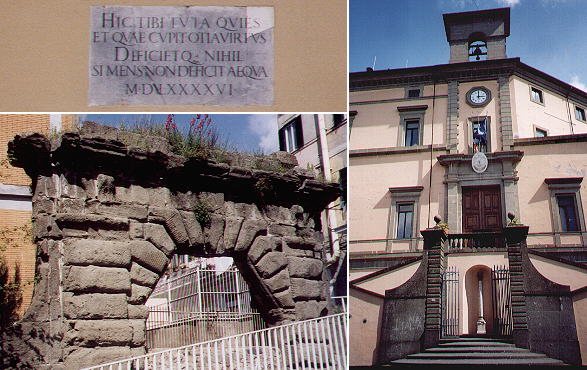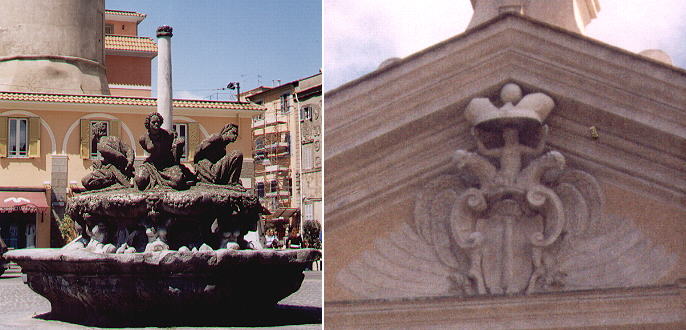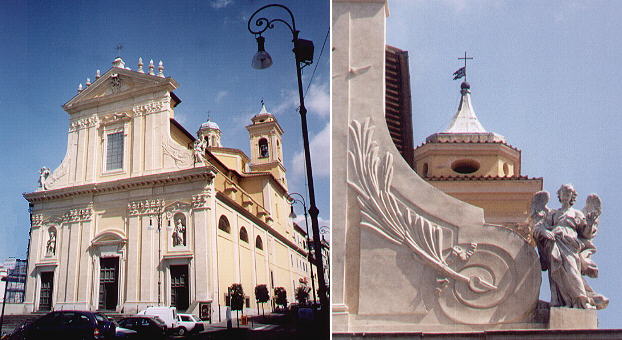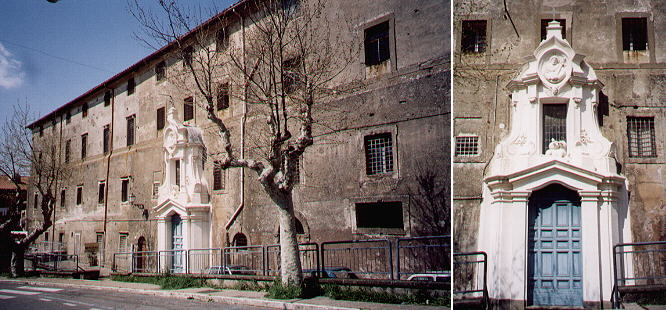  Giuseppe Vasi's Digression - Marino
The main street led to the top of the town and to a palace where an isolated column in a niche told the viewer that he was looking at the Colonna palace. Marino was one of the few fiefdoms the Colonna had not sold to the emergent families of XVIIth century Rome (Borghese, Barberini, Pamphilj, Chigi).
The main fountain celebrates what was both the great achievement of the family and the beginning of its economic decline. The four moors (meant to portray Turkish prisoners, both men and women) tied to a column are a reference to the naval battle of Lepanto where in 1571 the allied fleets of Spain, Venice and the Papal States defeated the Turks. Marcantonio Colonna led the papal fleet and he actually paid for its manning and equipment: his contribution to the victory gave him glory and in memory of the event a mermaid was added to the family heraldic symbols (and mermaids support the basin of the fountain and a mermaid is portrayed in the decoration of the main church of Marino). The less positive aspect of the event was its economic aspect: the victory of Lepanto did not lead to any actual conquest and Marcantonio Colonna and his successors had to deal with the expenses incurred for granting to their family the honour of having fought for the defence of Faith. The fountain is also known as Fontana del Vino as it sprouts wine (on special occasions only: there is another Fontana del Vino in Genzano).
Notwithstanding their economic difficulties the Colonna managed to give Marino a very imposing main church designed by Antonio del Grande in 1650.
Immediately outside Marino a huge Dominican nunnery with its small windows conveys the idea of a prison (which in a sense it was). It has an interesting XVIIIth century church by Giuseppe Sardi with an elaborate entrance, which currently suffers from the excessive contrast between its whiteness and the shabby appearance of the rest of the building. Excerpts from Giuseppe Vasi 1761 Itinerary related to this page:
Next step in your tour of the Environs of Rome: Velletri See my Home Page on Baroque Rome or my Home Page on Rome in the footsteps of an XVIIIth century traveller. |
All images © 1999 - 2004 by Roberto Piperno. Write to romapip@quipo.it



